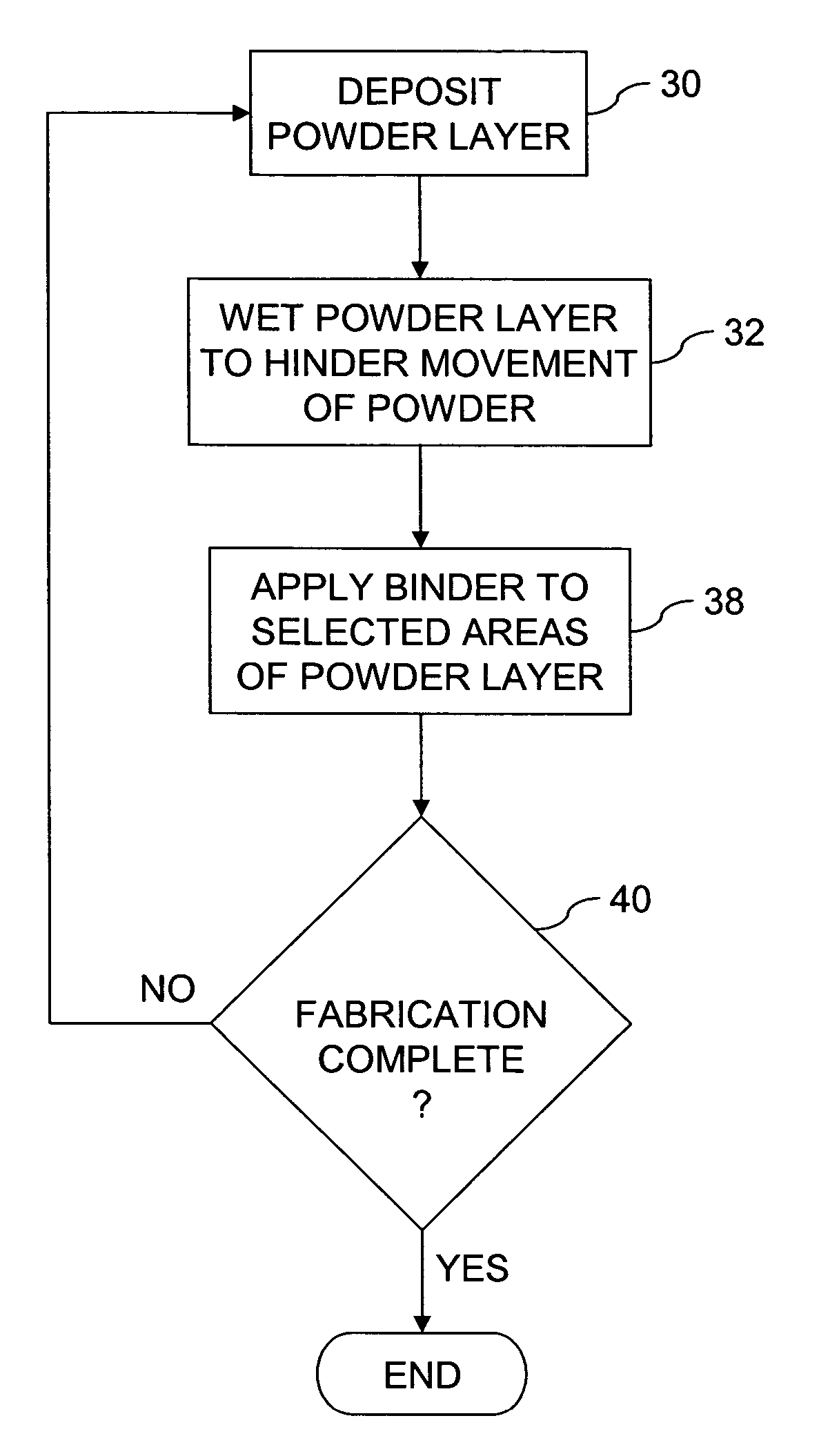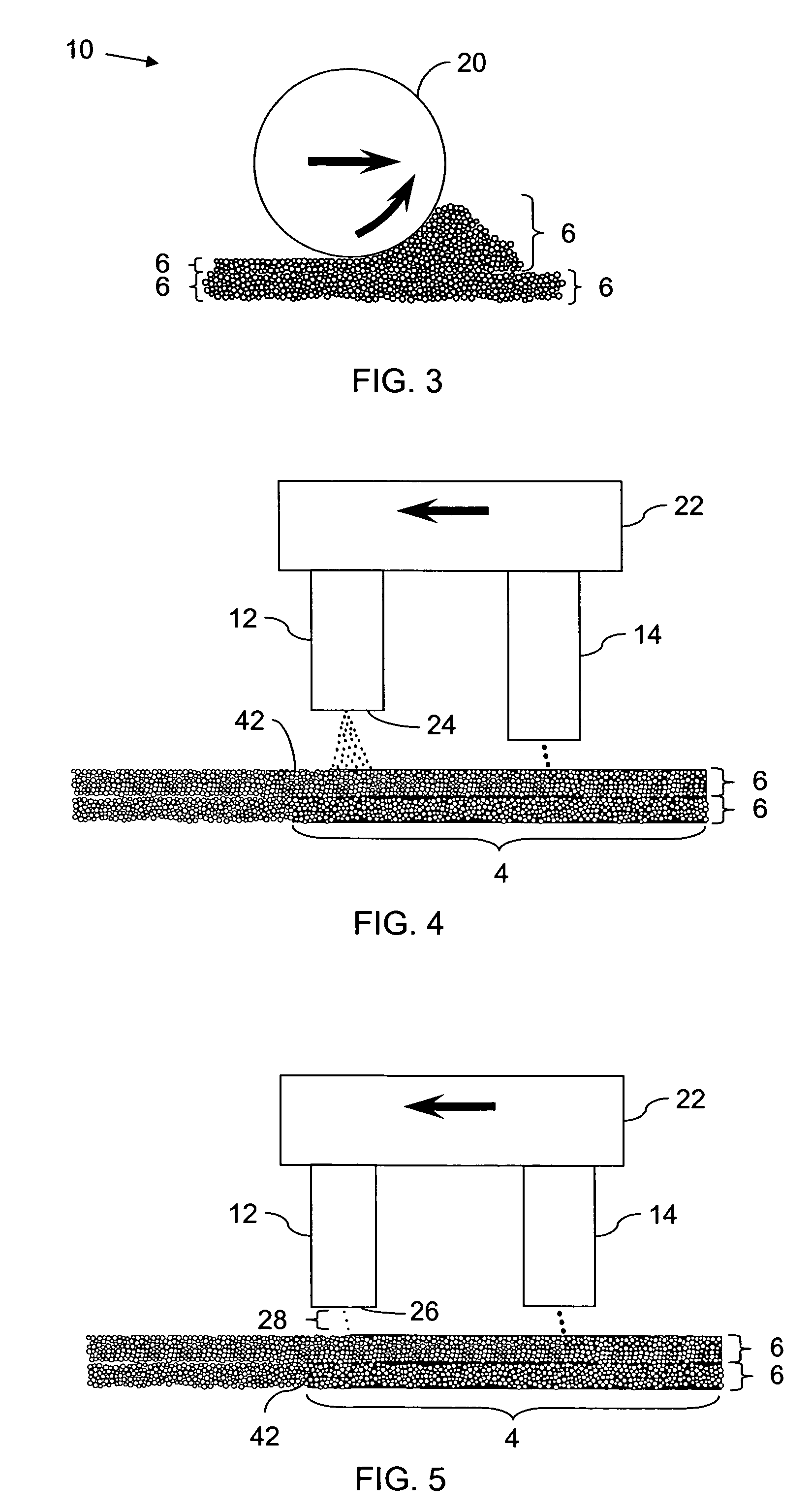Fabricating a three-dimensional object
a three-dimensional object and fabrication technology, applied in the direction of additive manufacturing processes, manufacturing tools, instruments, etc., can solve the problems of degrading the quality of objects, affecting the production efficiency of objects, and easily displaced powder particles in the surface layer
- Summary
- Abstract
- Description
- Claims
- Application Information
AI Technical Summary
Benefits of technology
Problems solved by technology
Method used
Image
Examples
Embodiment Construction
[0019]FIG. 1 shows one embodiment of solid freeform fabrication tool 2 for making a three-dimensional object 4 from powder layers 6. The height of each layer 6 is exaggerated to better illustrate the invention. In one embodiment, solid freeform fabrication tool 2 includes work surface 8, powder distributor 10, dispenser 12, and applicator 14. Controller 16 coordinates the operation of work surface 8, powder distributor 10, dispenser 12, and applicator 14.
[0020] Work surface 8 is any surface or platform upon which object 4 may be supported while being fabricated. Powder distributor 10 is any apparatus or system configured to deposit powder layers 6 onto work surface 8. In one embodiment, as shown in FIG. 3, powder distributor 10 includes a rotating roller 20 which spreads an amount of powder to a desired thickness as it moves above the build work surface.
[0021] Referring again to FIG. 1, in one embodiment, work surface 8 is moveable with respect to powder distributor 10 for precise...
PUM
| Property | Measurement | Unit |
|---|---|---|
| Area | aaaaa | aaaaa |
| Distance | aaaaa | aaaaa |
| Hydrophobicity | aaaaa | aaaaa |
Abstract
Description
Claims
Application Information
 Login to View More
Login to View More - R&D
- Intellectual Property
- Life Sciences
- Materials
- Tech Scout
- Unparalleled Data Quality
- Higher Quality Content
- 60% Fewer Hallucinations
Browse by: Latest US Patents, China's latest patents, Technical Efficacy Thesaurus, Application Domain, Technology Topic, Popular Technical Reports.
© 2025 PatSnap. All rights reserved.Legal|Privacy policy|Modern Slavery Act Transparency Statement|Sitemap|About US| Contact US: help@patsnap.com



